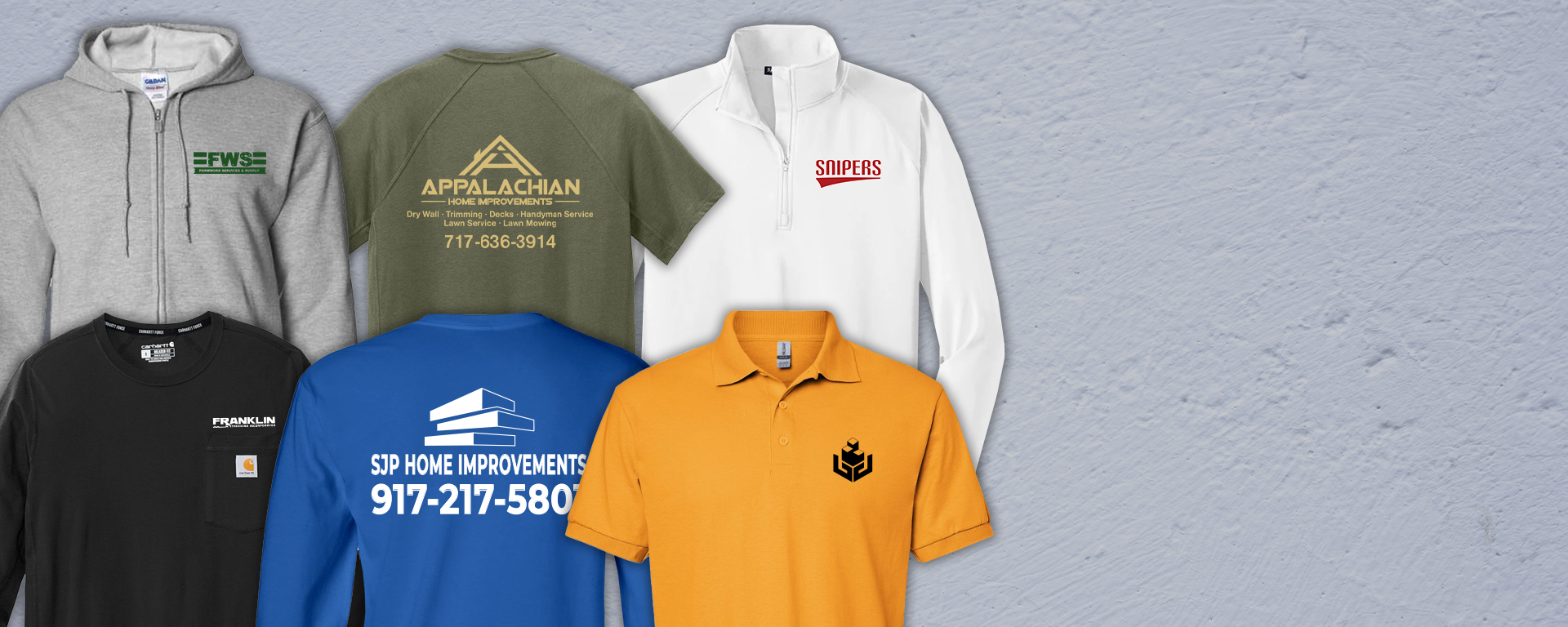Branded Clothing for Travel: Wrinkle-Resistant Fabrics That Perform
Branded Clothing for Travel: Wrinkle-Resistant Fabrics That Perform
Blog Article
Recognizing Clothing: The Significance of Fabric Selections in Your Wardrobe
The choice of textile in clothes plays an essential role in both aesthetic appeals and functionality. Different materials supply varying degrees of comfort, breathability, and durability, straight influencing the wearer's experience. Recognizing these nuances can enhance one's wardrobe substantially. Lots of neglect exactly how these choices can affect not just individual style, but likewise sustainability. What material choices could redefine your wardrobe and straighten it with both design and duty?
The Function of Fabric in Style and Functionality

Usual Material Types and Their Characteristics
When choosing clothing, comprehending the features of usual material types is crucial for making educated options. Cotton, a widely-used natural fiber, is recognized for its softness, breathability, and convenience, making it suitable for sportswear and everyday garments. Bed linen, one more natural choice, flaunts exceptional moisture-wicking buildings and a distinct appearance, perfect for warm climates.Wool, frequently preferred for its heat and longevity, varies in excellence; merino woollen is soft against the skin, while coarser kinds are utilized for outerwear. Synthetic textiles like polyester and nylon offer toughness and resistance to creases, making them prominent for activewear and travel garments. Blends, which combine artificial and all-natural fibers, can boost capability while maintaining comfort. By acknowledging these fabric features, individuals can select clothing that lines up with their lifestyle and aesthetic choices.
Breathability and Convenience: Selecting the Right Fabrics for Different Environments
Selecting the best materials for various environments can substantially boost comfort and general wearability. Breathable materials are important in warm environments, as they allow air circulation and dampness dissipation. Fabrics such as cotton, bed linen, and moisture-wicking synthetics properly attract sweat far from the body, maintaining the wearer cool and completely dry. On the other hand, in chillier environments, thicker materials like wool or fleece provide insulation while preserving breathability, making certain heat without overheating.Additionally, the option of material weight plays an important function; light-weight textiles are better for summertime, whereas heavier options are suited for winter season wear. Recognizing the distinct properties of each textile allows individuals to dress properly for varying weather. Ultimately, picking breathable and comfortable textiles tailored to certain climates can substantially boost daily comfort and boost the general experience of putting on garments.
Sturdiness and Care: Just How Textile Impacts Longevity of Your Closet
Selecting the best products can substantially affect the toughness and treatment requirements of a closet. Fabrics such as cotton and polyester are understood for their durability and ease of maintenance, making them optimal for everyday wear. On the other hand, delicate materials like silk and shoelace need more mindful handling and specialized cleaning approaches, which can boost the moment and initiative required for care. Branded Clothing.Durability is also affected by the textile's weave and surface; firmly woven fabrics tend to stand up to wear and tear far better than freely woven choices. Furthermore, go to this site artificial blends frequently give improved durability, integrating the finest high qualities of numerous fibers.Understanding the care instructions for each fabric is necessary, as inappropriate washing or drying out can bring about premature wear. Inevitably, choosing long lasting materials can bring about a longer-lasting closet, minimizing the frequency of replacements and adding to a more sustainable style selection
The Impact of Textile on Fit and Shape

Sustainable Fabric Choices: Making Eco-Friendly Choices
The influence of textile prolongs past fit and shape to incorporate ecological factors, prompting a growing passion in lasting textile choices. Environment-friendly fabrics, such as natural cotton, hemp, and Tencel, are getting grip amongst customers who focus on sustainability in their closets. These products are usually produced with fewer chemicals and water, minimizing their environmental footprint.Additionally, recycled fabrics, made from post-consumer waste, provide a cutting-edge solution to the textile industry's contamination issue. Brands significantly welcome openness in their sourcing approaches, permitting consumers to make enlightened decisions concerning their purchases.Choosing sustainable fabrics not just sustains moral techniques however likewise encourages the garment industry to embrace even more responsible production approaches. As awareness of ecological concerns rises, individuals are urged to review the lasting influence of their fabric selections, promoting an activity towards a much more sustainable and eco conscious technique to style.
Raising Design: Just How Textile Can Change an Outfit
While numerous might concentrate on shade and cut when selecting a clothing, site the choice of fabric plays an essential function in elevating design and boosting general appearance. Various materials share distinctive state of minds and messages; for instance, silk shows deluxe and class, while denim supplies a casual, relaxed ambiance. The appearance and drape of a textile can significantly alter the silhouette, with organized textiles offering a polished appearance and softer ones developing a more fluid, kicked back aesthetic.Moreover, the weight of the fabric influences wearability across periods. Light-weight materials like bed linen and cotton are ideal for summer season, while larger products such as wool and velour offer heat and elegance in cooler months. Understanding material residential properties, such as breathability and stretch, also encourages individuals to make enlightened selections that boost comfort without compromising style. Eventually, the right textile can change an outfit from normal to phenomenal, making it a crucial consideration in any type of wardrobe.
Often Asked Questions
Just how Do I Determine the Textile Content of My Clothes?
To determine textile material, one can analyze care tags, conduct melt examinations for fiber identification, or consult fabric swatches. These methods aid differentiate materials, making certain educated selections for apparel treatment and maintenance in everyday wear.
Can Material Choice Affect My Mood or Confidence?
Textile selection can significantly affect a person's mood and self-confidence. Branded Clothing. Specific materials might stimulate feelings of convenience or style, while others can really feel limiting or uncomplimentary, ultimately affecting self-perception and emotional well-being throughout the day
What Fabrics Are Best for Delicate Skin?
For people with sensitive skin, all-natural textiles like cotton, bed linen, and bamboo are usually suggested. These products are breathable, hypoallergenic, and much less likely to trigger inflammation, making them ideal selections for convenience and skin health and wellness.
Just how Do I Correctly Wash and Care for Different Fabrics?
To effectively wash and care for various fabrics, one need to consider each product's certain demands, including temperature level settings, cleaning agents, and drying methods, making certain long life and maintaining the textile's initial qualities for perfect usage.
Exist Details Fabrics for Athletic or Efficiency Put On?
Sports or performance wear frequently makes use of textiles such as spandex, polyester, and nylon. These materials are developed for moisture-wicking, breathability, and versatility, boosting motion and comfort throughout exercises while offering sturdiness and assistance. Alternatively, in cooler environments, thicker fabrics like woollen or fleece give insulation while maintaining breathability, ensuring warmth without overheating.Additionally, the selection of fabric weight plays an essential function; light-weight textiles are preferable for summertime, whereas much heavier choices are matched for winter season wear. In comparison, fragile materials like silk and shoelace call for more mindful handling and specialized cleaning techniques, which can raise the time and effort required for care.Durability is likewise affected by the material's weave and coating; securely woven fabrics tend to withstand wear and tear much better than freely woven choices. In contrast, stiff materials can limit movement but give a traditional, polished look.Moreover, the density and appearance of the fabric can influence the aesthetic assumption of body shape. The impact of textile expands beyond fit and silhouette to include ecological variables, triggering a growing passion in sustainable fabric options. The appearance and drape of a textile can drastically change the shape, with organized textiles providing a sleek appearance and softer ones creating a more fluid, kicked back aesthetic.Moreover, the weight of the material influences wearability across seasons.
Report this page